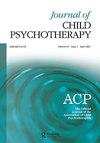研讨会上一位代表的回答
IF 0.8
Q4 PSYCHOLOGY, CLINICAL
引用次数: 0
摘要
在这本论文集中,我觉得我们很荣幸听到同事们如何根据临床经验,将他们的内部思想和想法塑造成可以创造性地用语言表达的东西,从而在出版物中分享。作者以敏感和严谨的态度,探讨了我们如何获得知情同意以及撰写和出版临床材料的其他重要方面的问题。Anagnostaki(2022)提请我们注意“信任”在与患者及其家人和同事的精神分析关系中的重要性。这让我想起了一位多年来我非常熟悉的家长,在我接受临床培训之前,我曾在一所医院学校工作,我曾想象有一天我会写下他在幼儿园的孩子。当我向这位家长询问是否有可能获得出版许可时,他们完全顺从,近乎被动。他们同意我可以写任何我喜欢的关于孩子的东西,无论是现在还是将来。正如Anagnostaki在谈到“杰森的”家人时所问的那样,“协议”实际上是一种否认吗?如果是这样,如果这是一种避免某事的方式,那么这怎么能被理解为“知情”呢?这让我很担心。就我而言,我没有问孩子们对我有一天写他们的想法有何感受。回想起来,这些事件破坏了我对自己与家人关系的信任。我试图传达我写他们的雄心的经历,在我心中引发了一个问题,即专业人士和家庭之间的权力差异,他们已经被制度化,一次住院数月,依赖专业人士。Holloway(2022)建议,在积极与患者合作的同时,让我们的患者参与获得知情同意和写作出版过程的一种方式是“共同写作”。这为体验成为治疗遭遇的一个方面提供了机会。然而,Holloway承认,这并不总是合适的,尤其是在虐待或严重精神病的情况下。这让我想起了我自己的一个强化训练案例。我经常想,“与同事们分享这将是一个多么精彩的案例”,但我对这个想法感到发自内心的不安这符合谁的利益?”我在深入探究时思考。有时,出于重要的临床和伦理原因,我们需要面对并非所有患者的故事都能被讲述的现实。为了解决这些问题,我们可以创建复合案例。本文章由计算机程序翻译,如有差异,请以英文原文为准。
Response piece from a delegate at the symposium
In this collection of papers, I feel we are privileged to hear how colleagues shape their internal flow of thoughts and ideas, based on clinical encounters, into something that can be expressed creatively in words and therefore shared in publication. With sensitivity and rigour, the authors engage with the question of how we might go about gaining informed consent and other important aspects of writing and publishing clinical material. Anagnostaki (2022) draws our attention to the importance of ‘trust’ in the psychoanalytic relationship with our patients and their families, and colleagues. This put me in mind of a parent I got to know very well, over several years, in a previous role working in a hospital school, before my clinical training, and whose nursery aged child I had imagined I’d like to write about one day. When I approached the parent about the possibility of gaining consent to publish, it was given with total compliance, verging on passivity. They agreed I could write whatever I liked about the child, now or in the future. As Anagnostaki asks in relation to ‘Jason’s’ family, was ‘agreement’ in fact a sort of denial? And if so, if it was a way of avoiding something, how can this be understood as ‘informed’ in any way? This concerned me. In my case, I had not asked the child how they felt about the idea of me writing about them one day. In retrospect, these events had undermined my own trust in my relationship to the family. My experience of trying to communicate my ambition to write about them posed questions in my mind about the power differentials between a professional and a family, who had become institutionalised, having been in hospital for months at a time, dependent on professionals. Whilst still working actively with a patient, Holloway (2022) suggests that one way of engaging our patients in the process of gaining informed consent and writing for publication is in the collaborative act of ‘co-writing’. This offers an opportunity for the experience to become an aspect of the therapeutic encounter. Yet, Holloway acknowledges that this will not always be appropriate, particularly within the context of abuse or serious psychotic illness. This reminded me of one of my own intensive training cases. I’d often had the thought, ‘what a brilliant case this would be to share with colleagues’, and yet I felt visceral unease about even entertaining the idea. ‘In whose interest would this be?’ I thought when probing deeper. There will be instances when we need to face the reality that not all patients’ stories can be told, for important clinical and ethical reasons. To get around these issues we may create composite cases.
求助全文
通过发布文献求助,成功后即可免费获取论文全文。
去求助
来源期刊

JOURNAL OF CHILD PSYCHOTHERAPY
PSYCHOLOGY, CLINICAL-
CiteScore
0.70
自引率
50.00%
发文量
46
期刊介绍:
The Journal of Child Psychotherapy is the official journal of the Association of Child Psychotherapists, first published in 1963. It is an essential publication for all those with an interest in the theory and practice of psychoanalytic psychotherapy and work with infants, children, adolescents and their parents where there are emotional and psychological problems. The journal also deals with the applications of such theory and practice in other settings or fields The Journal is concerned with a wide spectrum of emotional and behavioural disorders. These range from the more severe conditions of autism, anorexia, depression and the traumas of emotional, physical and sexual abuse to problems such as bed wetting and soiling, eating difficulties and sleep disturbance.
 求助内容:
求助内容: 应助结果提醒方式:
应助结果提醒方式:


